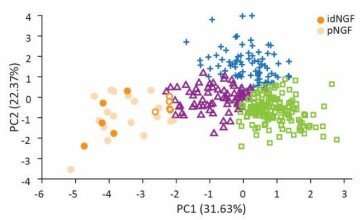Researchers discover neuronal cell type for controlling the flow of information in the brain

A scientific team from MedUni Vienna's Center for Brain Research has now identified specific cells that regulate the transmission of information between brain areas. This discovery forms the basis for the development of new treatment options for neuropsychiatric disorders such as schizophrenia and autism, which are characterized by impaired coordination of information flow in the brain. The study has now been published in Science.
The scientists focused their basic research on the question of how communication between different brain areas is regulated and how the constantly changing streams of information from different sources can be processed without errors. Ece Sakalar, Thomas Klausberger and Balint Lasztoczi from the Division of Cognitive Neurobiology at MedUni Vienna's Center for Brain Research sought and found answers in the so-called CA1 area of the hippocampus, a central switchboard in the brain. There, the so-called neurogliaform cells cause the converging information about the current environment and also about relevant past experiences to be combined without being mixed up.
Thus far, science has been in the dark when it comes to the function of neurogliaform cells. "In our preclinical experiments, we have now discovered that neurogliaform cells, by briefly inhibiting other cell types, ensure that current perception and memories of past experiences can be processed both separately and also in combination," explains study author Balint Lasztoczi. This is what makes it possible, when looking at a photograph of one's grandmother (sensory information) and spontaneously recalling the smell of her homemade cakes (memory), to remain aware of what is happening in the here and now and what is being remembered.
Traffic light in the flow of information
The regulation of ongoing and remembered information and the smooth flow of communication between brain areas is the basis for a functioning nervous system. In various neuropsychiatric disorders, such as schizophrenia and autism, this organization is impaired. In this context, the current research results from the MedUni Vienna study offer hope: by deciphering the function of neurogliaform cells as traffic lights in the flow of information, the researchers are laying foundations for the development of new treatment options.
Next in their research, the scientists intend to investigate how the activity of neurogliaform cells can be influenced to form the starting point for new drugs and therapeutic options for neuropsychiatric disorders such as schizophrenia and autism.
More information: Ece Sakalar et al, Neurogliaform cells dynamically decouple neuronal synchrony between brain areas, Science (2022). DOI: 10.1126/science.abo3355

















